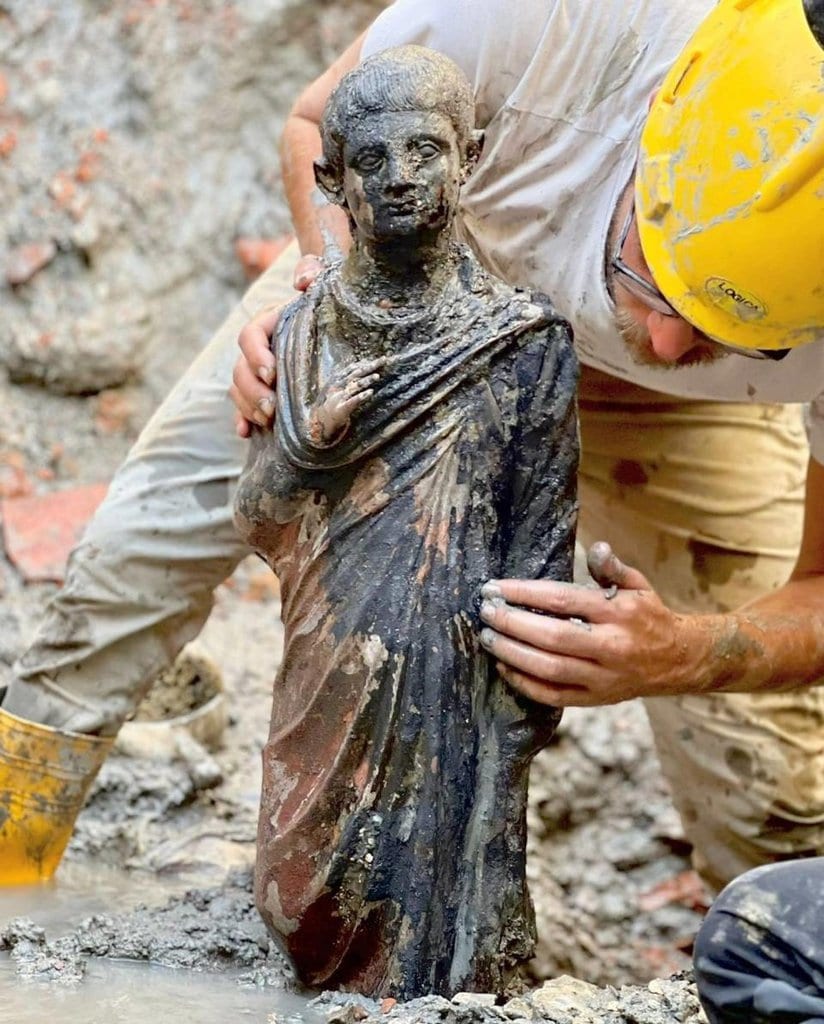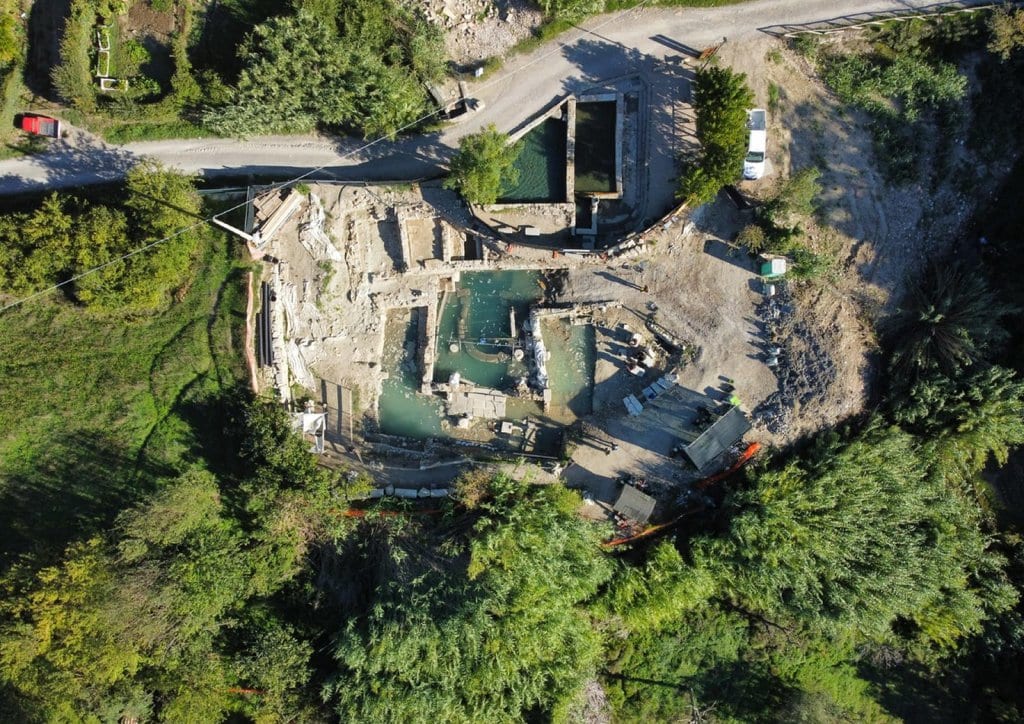
Since 2019, archaeologists have been excavating an area outside Siena, Italy. It’s the site of ancient thermal baths. However, just last month, they found fragments of statues in San Casciano dei Bagni. Since then, researchers have unearthed 24 bronze statues and other ancient objects, dating the findings back some 2,300 years!
One of the Most Important Findings
The find is one of the most significant in the whole Mediterranean region, according to excavation leader Jacopo Tabolli, a historian at the University for Foreigners in Siena. It all started with small unidentified fragments that showed up in the mud and water, like a glimmering coin, a hand, or an elbow. Gradually the whole statue appeared, followed by many more.

They date back to a time of great upturn in Tuscan history. The shift from Etruscan to Roman rule was taking place through hard-fought battles. After the Romans eventually won, they changed Etruscan culture entirely by burying or destroying historical items.
Who Are the Statues?
Among the statues are those of Hygieia, Apollo, and other Greco-Roman mythological beings. Some of them had Latin and Etruscan inscriptions with the names of important Etruscan families.
Chiara Fermo, an archaeologist at the University of Siena, was particularly struck by the quality of the details the statues had. She pointed out that a female statue was entirely bejeweled, and had very detailed necklaces and earrings. The scientist gave this statue as an example of what a woman of the time must have looked like.
Water Helped Preserve the Ancient Statues
Scientists think that the statues were immersed in thermal waters in some kind of ritual. People gave to the water because they hoped that the water would give something back to them. However, researchers don’t know the exact reason the statues were drowned aside from guesses. What they do know is that the waters helped keep them in great condition. The mud created an atmosphere without oxygen, which protected the bronze statues from microorganisms.

People used the area’s thermal baths until the fifth century C.E. The researchers took the statues and other findings to a nearby restoration lab in the town of Grosseto. Eventually, they’ll be shown in a new museum opening in San Casciano.